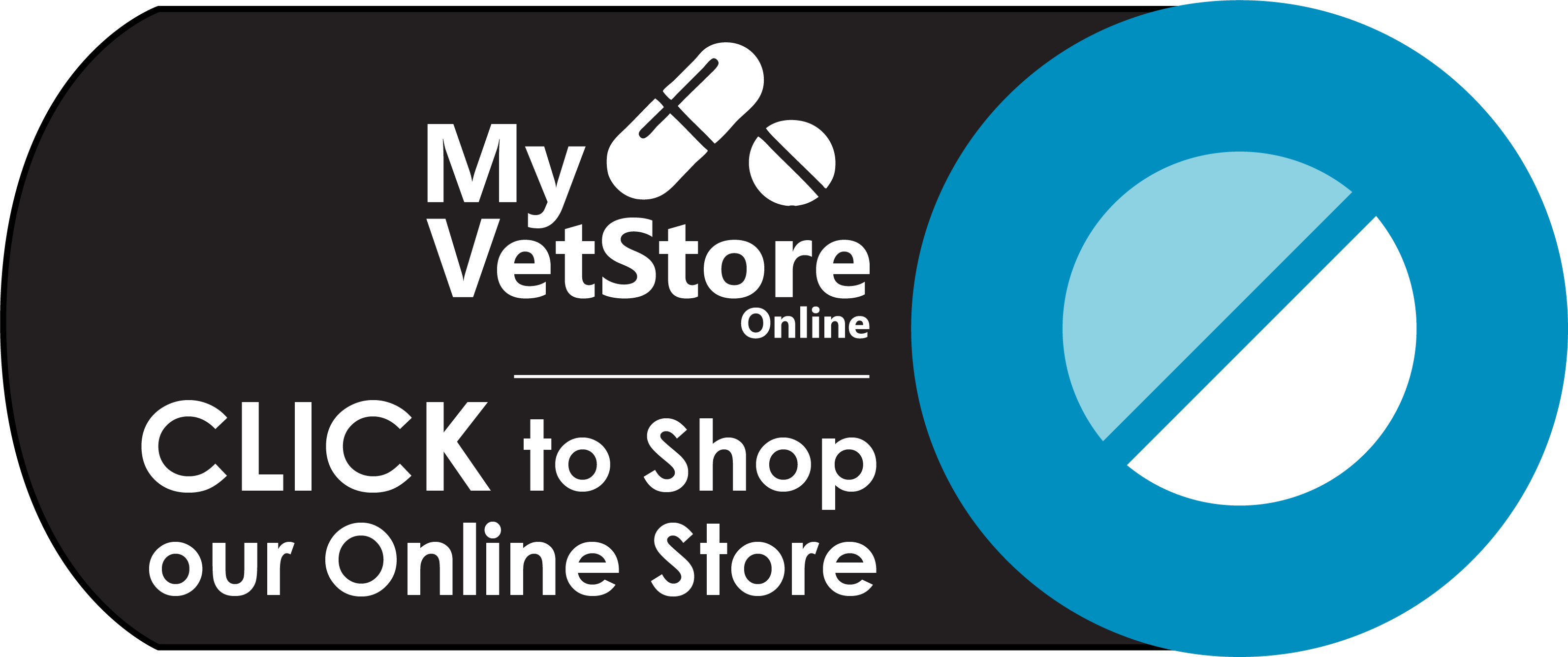The most common causes of ophthalmic emergencies include: eyelid lacerations, corneal ulceration (ulcerative keratitis), uveitis (recurrent or not), globe punctures, glaucoma, and sudden blindness.
Ulcerative keratitis (corneal ulceration)
- Occurs when there is disruption of the corneal surface
- Common clinical signs include: squinting, tearing, cloudiness, swollen eyelids
- Can be sterile (non-infected) or infected
- If infected, can be bacterial, fungal, or viral
Your veterinarian will evaluate the eye and perform a topical fluorescein stain which will outline the ulcerative region on the cornea. Treatment for corneal ulcers typically include systemic anti-inflammatory medications and topical antibiotics. Never apply topical steroids to an eye that is ulcerated or without first having been evaluated by a veterinarian!
Uveitis (AKA: Periodic Ophthalmia or Moon Blindness)
- Uveitis is inflammation of the anterior chamber of the eye
- Uveitis can occur secondary to other conditions of the eye
- When recurrent, it is considered an autoimmune disease with multiple causes
- Common clinical signs include: squinting, cloudiness, redness, miotic (small, misshapen) pupil
- One or both eyes can be affected
- Recurrent cases can eventually lead to complete blindness
Your veterinarian will evaluate the eye. Treatment goals include improving comfort, decreasing inflammation, and preventing vision loss over time. Most cases require a topical steroid, therefore, it is imperative to have the eye evaluated by your veterinarian prior to beginning therapy to ensure there is no corneal defect.
Eyelid Lacerations:
- Eyelid lacerations are generally obvious when they occur
- Common clinical signs include: swelling of eyelids, visible laceration, squinting, bleeding
Eyelid lacerations always require veterinary intervention for repair. It is imperative to maintain the normal structure and function of the eyelid to prevent excessive exposure of the cornea to the environment, which can lead to dryness and ulcerative keratitis. Most eyelid lacerations will require sedation as well as local anesthesia for repair. Your veterinarian will determine the best course of action.
Glaucoma
- Glaucoma is a relatively rare condition in horses
- Occurs secondary to alterations in the drainage of fluid from the eye that leads to an increase in the intraocular pressure (pressure within the eye)
- Can occur secondary to other conditions of the eye, such as Recurrent Uveitis
- Common Clinical Signs: swollen globe/bulging eye, redness, cloudiness
Your veterinarian will examine the eye and measure the intraocular pressures. Treatment typically involves administration of topical medications. In horses where the affected eye is blind and painful, enucleation (removal of the eye) is an ultimate treatment option.
Sudden Blindness
- Sudden blindness can occur secondary to glaucoma, recurrent uveitis, ocular hemorrhage, ocular trauma, genetic, etc.
- Most horses that experience sudden blindness are agitated/anxious and display behavioral changes which can be dangerous – BE CAREFUL when handling these horses
- These cases should be evaluated by your veterinarian at their earliest regular convenience
In any case where your horse is squinting, tearing, or you are concerned about the eye, consult your veterinarian to discuss symptoms and recommendations. Most ophthalmic emergencies are true emergencies that should not wait for normal business hours to be seen.


